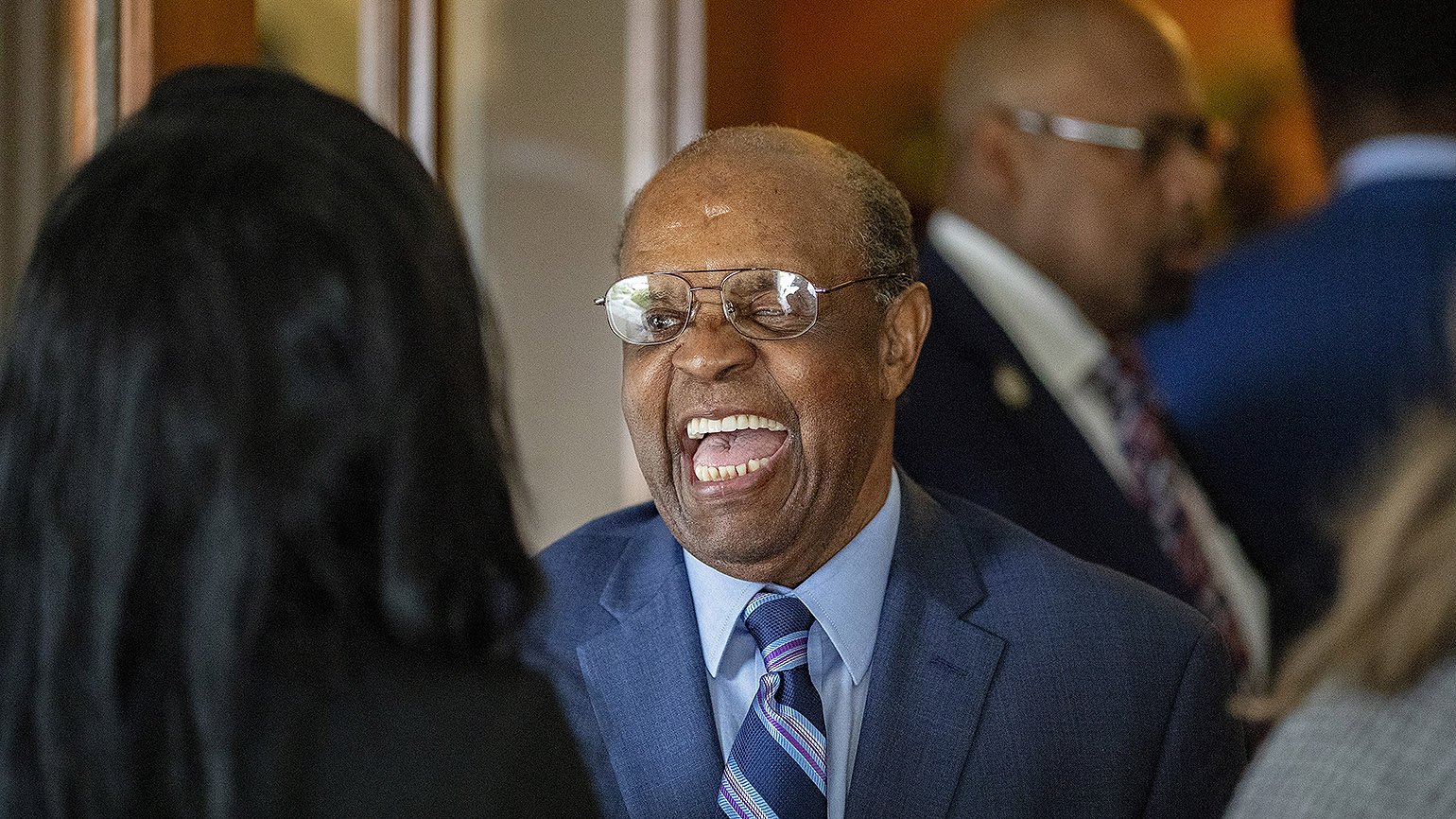Sustainability Spotlight: The 122nd U.S. Open at The Country Club in Brookline, Massachusetts.
The stately finishing hole at The Country Club in Brookline, Mass. is as fitting a stage for deciding a U.S. Open in 2022 as in 1913. Photo credit: John Mummert/USGA Museum
The United States Open (U.S. Open) is America’s oldest golf championship and operated by America’s oldest governing golf body, the United States Golf Association (USGA). It is usually one of, if not THE, toughest tests of golf each year and features 156 of the best golf professionals and amateurs in the world. Its designation as an ‘open’ golf tournament means that any male golfer, if they meet the tournament’s minimum standards of playing ability, can qualify to play in the tournament. To win the U.S. Open is to win America’s National Golf Championship, so no matter who takes home the championship, their name will join a very long list of some of the greatest golfers to ever play the game.
For our next installment in our Sustainability Spotlight series, we examine America’s national golf championship from our Driving the Green perspective and shed some light on the great things going on behind the scenes at this year’s tournament as well as some of the amazing golf history that has taken place at this golf course.
United States Golf Association
Founded in 1894, the USGA’s mission is to “promote and conserve the true spirit of the game of golf as embodied in its ancient and honorable traditions. It acts in the best interests of the game for the continued enjoyment of those who love and play it.” The work of the USGA can be filtered down to six main concepts:
Inspire Through Championships - The USGA hosts 17 championships every year for the best players across the United States and the world on some of the game’s greatest golf courses.
Strengthen the Game’s Foundation - The USGA partners with The R&A to write, interpret and educate on the rules of the game for its global participants. This collaboration is vital to setting standards of measure so any golfer anywhere in the world can compete on an equal basis with other golfers, no matter their ability.
Promote Outstanding Playing Experiences - The USGA employs a vast array of agronomists, scientists and engineers that implement the many innovative products and services to golf courses, clubs and associations in an effort to improve resource efficiency, reduce consumption and improve on-course experiences.
Deepen Engagement With Golfers - The USGA partners with many industry organizations to find ways to better connect with golfers. This is done by advocating for public golf and creating programs, education and services that provide deeper connection to the game for all golfers.
Expand Participation - The USGA recognizes that the game of golf must reflect the true diverse makeup of our society and it readily creates and supports many initiatives developed to make golf more inclusive and accessible to women and minorities.
Celebrate the Game’s History - History can be a valuable teacher and the USGA is committed to collecting and preserving important historical artifacts, celebrating the game’s great champions and moments and reflecting on the many inequalities present in golf’s past so that it can build a better future for the game.
Sustainability at the 122nd U.S Open at The Country Club in Brookline, MA
While much of the sustainability work the USGA has taken on is focused on industry-wide turfgrass and resource management projects, this year’s U.S. Open will look to become the most sustainable onsite experience to date. Two years ago, the USGA became a signatory of the UN’s Sports for Climate Action Framework and the commitments laid out below speak to the demands imparted upon the framework’s signatories.
The USGA’s plan to reduce the championship’s carbon footprint and reinvest dollars in Brookline’s environmental programs includes:
Creating a baseline measurement and analysis of the championship’s carbon impact including engaging with fans through a survey to learn how they traveled to the event to better account for the event’s total greenhouse gas emissions.
Reducing diesel-powered generators and adding more open-air spaces with fewerless air-conditioned ones.
Utilizing all-digital ticketing and app-based fan information to decrease paper waste.
Replacing single-use plastic bottles and cups with aluminum cans and cups as well as encouraging fans to bring their own refillable water bottles.
Investing in Brookline’s renewable energy projects and purchaseing Renewable Energy Credits
Plant 122 trees in the Town of Brookline, specifically in areas determined by the Commonwealth of Massachusetts as Environmental Justice Zones.
Restoring ecological areas of Robert T. Lynch Municipal Golf course to directly improve natural habitat, stormwater retention and water quality.
The Lee Elder Internship Program
As the first Black man to compete at the Masters Tournament, Lee Elder was a true golf pioneer.
Photo Credit - Creator: Jason Miczek | Credit: USGA Museum Copyright: USGA/Jason Miczek
Diversity in the golf industry workforce is pitifully low as only 1% of PGA of America golf professionals are African American and less than 10% are women. Recognizing the need to bring more diversity to golf tournament operations, the USGA created the Lee Elder Internship to provide 25 college and graduate students with a behind-the-scenes, hands-on career training program.
Named after the man who broke the color barrier at the 1975 Masters Tournament, the Lee Elder Internship seeks “to remove systemic barriers that can impede diverse participation in traditional internship programs”. The internship program received over 200 applications from 37 states and five countries and the 2022 cohort includes many students from Historically Black Colleges and Universities and other universities, studying in fields including business administration, sports management and public policy.
The Mike Davis Program for Advancing Golf Course Management
Since the early 1980’s, the USGA has embraced and prioritized its role as an environmental steward of the game of golf. While sustainability was not a word readily tossed around 40 years ago, much of the work the USGA has funded over the past four decades is under the guise of creating science-based best management practices and new turfgrass innovations all in the effort to improve resource efficiency and improve playing conditions.
In early April 2022, the USGA announced they invested $1.9 million in grants that will fund more than 80 short- and long-term research projects in 2022. The recipients of these grants include numerous college and university agricultural programs and industry organizations with grant categories including environment, genetics & breeding, and integrated turfgrass management. Project examples include evaluating drought tolerance and water use for fairway grasses and turfgrass breeding programs to improve quality, stress tolerance and resource-use characteristics of turfgrasses.
Since the program launched in 1983, the USGA has committed over $47 million to fund these grants, which has led to:
20% decrease in water usage and 40% decrease in nutrient usage in the last decade.
Annual industry savings of almost $2 billion through improved irrigation techniques, advancements in soil testing and more efficient fertilizer and pesticide use.
The next initiative the USGA is looking to launch, but has not shared much detail on, is based on the following question: ‘What if, over the next 15 years, we committed $30 million to reduce golf course water consumption by 45%?’ The program is gently and tentatively called the 15-30-45 Program.
Francis Ouimet and the 1913 U.S. Open
Francis Ouimet poses for a picture outside his home shortly after winning the 1913 U.S. Open.
The Country Club has hosted 17 USGA golf championships throughout its existence but no championship stands out more than the 1913 U.S. Open, which is widely considered to be one of the greatest U.S. Open’s ever played. I’ve made multiple recommendations to the book written by Mark Frost that tells the tale of the 1913 Open, called ‘The Greatest Game Ever Played’ and if you have not read it, golfer or non-golfer, go read it now.
Francis Ouimet was a 20-year old former caddie and amateur golfer who was the recipient of an last-minute invitation to play in 1913 U.S. Open because the USGA was in need of one more player to fill the field. Francis had developed a reputation among The Country Club members as a solid golfer and was the ideal candidate for the USGA’s exemption into the tournament. Francis grew up in a poor, working-class family across the street from The Country Club, a place he spent many afternoons caddying for members. A complete and total long-shot, Francis would go on to win the tournament in an 18-hole playoff over two of Britain’s greatest golfers, Harry Vardon (winner of 6 British Opens and 1 U.S. Open) and Ted Ray (1 British and U.S. Open victory). What’s fascinating about the story of Francis Ouimet is how eerily similar his upbringing was to that of Vardon and Ray, who were both from the small island of Jersey, off England’s coastline.
Francis’ victory in 1913 was fuel that fed the fire as golf spread quickly throughout the United States, igniting the golden age of golf architecture and inspiring many others to start playing the game. Almost immediately, golf became a sport of the people and its growing popularity as a recreational activity led to the investment and construction of thousands of municipal and public access golf courses. Sports equipment manufacturers began to mass produce equipment which not only brought down the cost of expensive equipment, but it also prioritized innovation and competition.
Today, the Francis Ouimet Scholarship Fund honors the legacy created by America’s first true golf hero. Founded in 1949, the scholarship fund provides deserving young men and women who have worked at golf courses with need-based college scholarships. To date, over $43 million in scholarships have been awarded to 6,325 students that have a graduation rate of 92%.
Driving the Green Take
Whether you plan to watch this weekend’s U.S. Open or not, one thing I hope you take away from this article is that the USGA tends to get it right more often than not, something that cannot be said for other golf industry organizations. As someone who works and communicates regularly with USGA staff and representatives, I’m excited to see the role they are taking on when it comes to advocating for the game.
It seems that now more than ever, golf, and more specifically municipal golf, is under a constant barrage from naysayers whose arguments focus solely on the game’s negative impacts on society. While some of the arguments have merit, it is often found that the reason the golf industry is receiving so much vitriol is that the game occupies a lot of land. We all know people will say and do a lot of things to get what they want, especially if it's high-valued real estate that someone else owns. This is why it’s so incredibly important that the USGA continues its work to advocate for the protection and investment in municipally run golf facilities. These specific golf communities are the lifeblood and breeding ground for the game to grow and evolve into the diverse and inclusive game it is quickly becoming.



